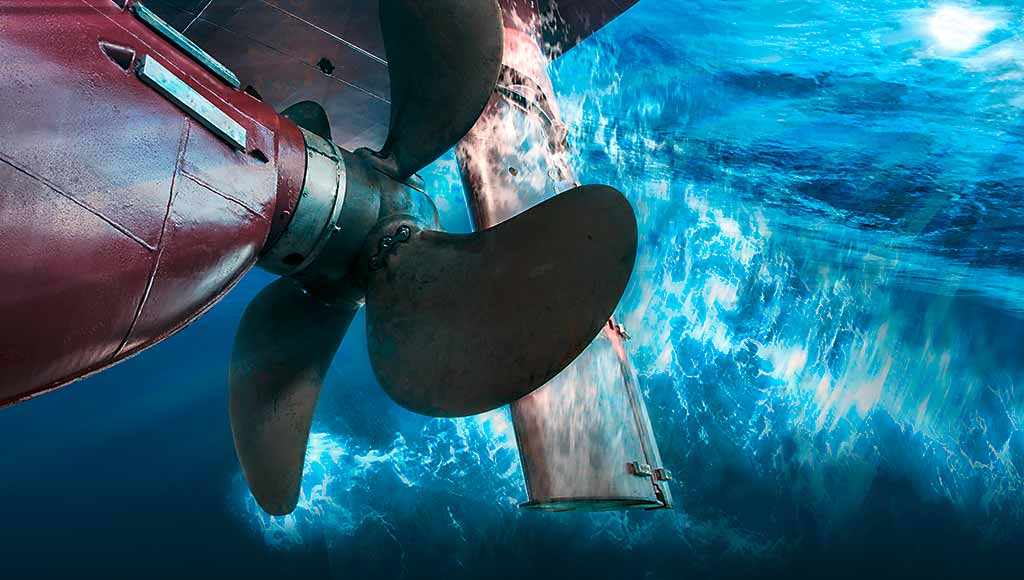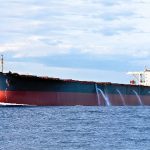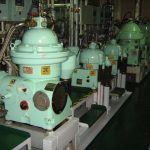For vehicles running on land, the propelling system which drives them is different. In those systems, the engine powers the shaft which is attached to the vehicle tyre to move ahead of the body of the vehicle. However, for ships which are displaced in water, there are no such tyres or surfaces where they can ride.
The ship is displaced in the water and the propeller is used to drive the ship ahead or backwards, depending upon the direction of rotation or pitch of the propeller. The engine of the ship is connected to the propeller of the vessel via shaft arrangement.
As the engine rotates the propeller, the radiating blades which are set at a particular pitch form a helical spiral, similar to a screw. While doing this, it transforms the power of rotation into thrust which is linear in nature. This linear thrust will act upon water such that as the propeller blades rotate it creates the pressure between the surface in front and back of it. Hence, a mass of fluid is accelerated in one direction creating a reactive force which helps the body attached to the propeller (which is the ship) moves ahead.
For the ship to move in the reverse direction, the engine and hence the propeller is rotated in an anti-clockwise direction. This will reverse the thrust and the ship will move astern. However, the engine of the FP-propeller is always designed for clockwise rotation when sailing ahead, hence, prolong operation in astern direction is not efficient.
For ships fitted with CP propeller, the engine direction is not affected hence astern efficiency of the ship is better than that of a fixed-pitch propeller.



Comments are closed